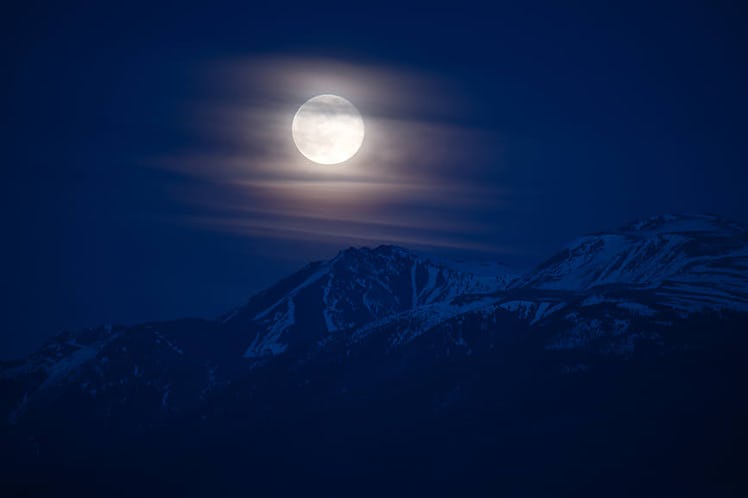
A Milk Moon Is Coming & It's The Symbolic Start To Summer You've Been Waiting For
If you needed any reason to believe that the world is far sweeter than we give it credit for, the upcoming full moon on May 29 will revive your faith in dreams. While it might seem like any ordinary full moon (though full moons are always everything but ordinary), wait until you find out that it's also called the "Milk Moon." If images of a glowing orb imbuing the night sky with lunar milk are not currently flooding your head, set your rational mind aside and let the romantic thoughts through. Or, at least agree with me when I say that Milk Moon would make a fantastic name for a trendy coffee shop. I mean, who wouldn't want to sip on a latté there? Well, if the meaning of the Milk Moon doesn't intrigue you, at least you'll come away with a great business idea.
All jokes aside, there's no way the Milk Moon won't pour serenity into your soul. If you're wondering who exactly decided to call the full moon of May's full moon a Milk Moon, its origins can be found in Native American culture, according to Time and Date. Colonial Americans began adopted these names as well and over the years, titles such as the "Milk Moon" have become poetic hallmarks in our calendrical system.
However, the Milk Moon was once more than just a mystical descriptor. Believe it or not, people haven't always used the traditional 365-day Gregorian calendar to remember important dates. All throughout ancient human history, people used to rely on the lunar cycle in order to understand what time of year it was. Names like the Milk Moon were created to specify when it is the month of May.
The title bestowed upon each full moon in the year was written with the current season in mind. For example, the full moon of April is called the "Pink Moon" because it is during the month of April that a pink flower known as wild ground phlox begins sprouting all over the place, turning the entire world pink.
Similarly, the reason the full moon occurring in the month of May is called a "Milk Moon" is that during this time of year, weeds, herbs, and grasses begin growing everywhere. Therefore, sheep, goats, and cows are filling their bellies with plenty of food after a long and hard winter where there was not much for them to eat. As a result, these animals are producing tons of milk. If you can imagine yourself as a member of a remote ancient village where you couldn't just buy milk from your local grocery store, your backyard cow finally being able to produce a solid supply of milk is a really big deal.
And this full moon is not only known as the Milk Moon. It's also called the "Corn Planting Moon," and the "Flower Moon," so you can really take your pick when it comes to gorgeous names. As you can imagine, the Flower Moon gets its name from the sprawling amount of wildflowers that begin to dazzle our world during the month of May.
If you'd like to see the beauty of the Milk Moon with your very own eyes, mark May 29 in your calendar, and make sure you're staring up at the night sky by 8:22 p.m. ET, when it rises. If you'll be busy in the evening, you can also catch it during the daytime, as it reaches its peak at 10:20 a.m. ET. Although the vast majority of us no longer milk our own cows, maybe the sight of the Milk Moon will conjure thoughts of what the month of May once meant to our ancient ancestors.